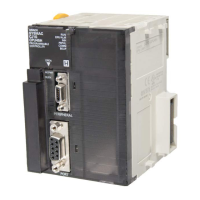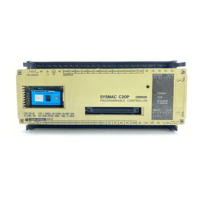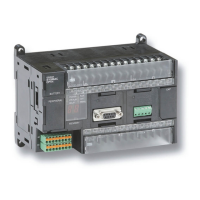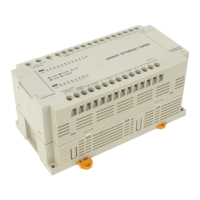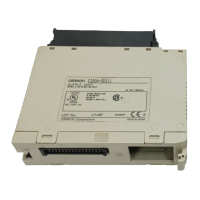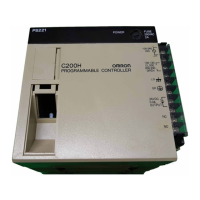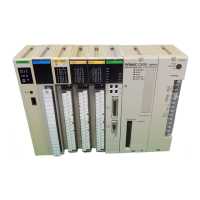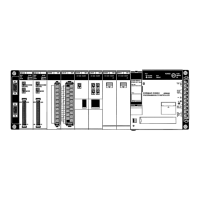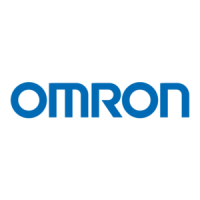
Do you have a question about the Omron SYSMAC CS/CJ Series and is the answer not in the manual?
| Series | CS/CJ Series |
|---|---|
| Category | Controller |
| Programming Languages | Ladder Diagram, Structured Text, Function Block Diagram, Sequential Function Chart |
| I/O Capacity | Varies by model (e.g., up to 5120 I/O points) |
| Communication Ports | RS-232C, RS-422/485 |
| Mounting | DIN rail |
| Power Supply | AC or DC (varies by model) |
| CPU Type | Various CPUs available within the CS/CJ series (e.g., CS1H, CS1G, CS1D, CJ1M, CJ2M, CJ2H) |
| Ethernet Support | Yes (varies by model) |
| Operating Temperature | 0°C to 55°C (32°F to 131°F) |
Specifies the intended audience for this manual, requiring electrical system knowledge.
General guidelines for operating OMRON products according to specifications and consulting representatives.
Critical safety warnings regarding PLC usage, I/O memory, and handling units.
Precautions for operating the PLC system in various environmental conditions.
Precautions to observe when using the PLC system, including software and data transfer.
Information on compliance with EMC and Low Voltage directives for CS/CJ PLCs.
Procedures for initial setup and battery installation for CS1 CPU Units.
How to set and use the internal clock for CS1 CPU Units.
Overview of CPU Unit internal structure, memory, and diagrams.
Description of PROGRAM, MONITOR, and RUN modes of the CPU Unit.
Explains how programs are grouped into tasks for execution.
Details various types of tasks like cyclic and interrupt tasks.
Fundamental concepts for writing CS/CJ-series PLC programs.
Important precautions when programming, focusing on flags and sections.
Procedures for checking programs for errors using CX-Programmer or console.
Instructions for handling input signals and execution conditions.
Instructions for outputting results of logical processing to bits.
Instructions for controlling program flow, such as END, JMP, and IL.
Details on various timer and counter instructions.
Instructions for comparing values and creating execution conditions.
Instructions for transferring data between memory areas.
Instructions for shifting bits or words within data.
Instructions for incrementing or decrementing numerical data.
Instructions for performing arithmetic operations on signed binary and BCD data.
Instructions for converting data between BCD, binary, and ASCII formats.
Instructions for performing logical operations (AND, OR, XOR) on bits and words.
Instructions for specialized mathematical operations like square roots.
Instructions for performing mathematical operations on floating-point numbers.
Instructions for handling double-precision floating-point data.
Instructions for manipulating data in tables and stacks.
Instructions for controlling data flow and scaling.
Instructions for calling and managing subroutines and macros.
Instructions for setting up and managing interrupt tasks.
Instructions for high-speed counter and pulse output.
Instructions for step-by-step program execution.
Instructions for interacting with basic I/O units.
Instructions for serial communications.
Instructions for network communication.
Instructions for manipulating file memory.
Instructions for displaying messages.
Instructions for calendar and time operations.
Instructions and functions for debugging programs.
Instructions for diagnosing and reporting failures.
Miscellaneous instructions not covered elsewhere.
Instructions for creating and managing block programs.
Instructions for processing text strings.
Instructions for controlling task execution status.
Overview of tasks, their advantages, and structure.
How to use TASK ON/OFF instructions and manage task status.
Details on types, priority, flags, and precautions for interrupt tasks.
How to manage tasks using CX-Programmer and Programming Console.
Information on types of file memory, data, files, and procedures.
Procedures for reading, writing, and managing files using various methods.
Procedures for initializing Memory Cards and EM File Memory.
Functions related to cycle time optimization and high-speed operations.
Explanation of index registers and their usage for indirect addressing.
Details on serial communication protocols like Host Link and No-protocol.
How to select and configure BCD or binary modes for timer/counter PVs.
Using scheduled interrupts as high-precision timers.
Functions related to system startup, maintenance, and protection.
Overview of diagnostic tools like error logs and failure diagnosis.
Details on normal and parallel processing modes.
Settings for prioritizing peripheral servicing.
Procedures for operating without a battery using flash memory or Memory Cards.
Includes I/O response time settings and I/O area allocation.
Procedures for transferring programs to the CPU Unit.
Functions for testing and debugging programs, including forced set/reset and tracing.
Compares features like capacity, I/O points, and processing speed across PLC series.
Detailed comparison of PLC features across different series.
Differences in wiring and other aspects for CS/CJ-series products.
Differences in wiring and other aspects for RS-422A/485 ports.
